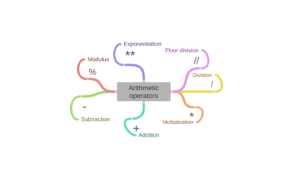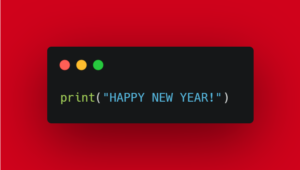Data types are one of the building blocks of python.
And You can do a lot of things with data types!
Fact: In python, all data types are implemented as an object.
A data type is like a specification of what kind of data we would like to store in memory and python has some built-in data types in these categories:
- Text type: str
- Numeric types: int, float, complex
- Sequence types: list, tuple, range
- Mapping type: dict
- Set types: set, frozenset
- Boolean type: bool
- Binary types: bytes, bytearray, memoryview
Now, let’s demistify all these data types by using type() function to display the data type of the variable.
Text type
str
- str stands for string in python used for storing text in python.
- Strings can be written either in single quotes or double qoutes in python, hence your choice.
Example:
Output:
Hello, world!
<class 'str'>Numeric types
int
- int stands for integer used to store integers (positive and negative numbers).
Example:
Output:
4
<class 'int'>float
- float stands for floating-point numbers (decimal point numbers)
Example:
Output:
3.14
<class 'float'>complex
- Complex numbers have a real and imaginary part, which are each a floating point number.
- Complex numbers can be written in two forms:
- real + (imag)j
- complex(real, imag)
Example:
Output:
(5+10j)
<class 'complex'>Sequence types
list
- A list is data type where you can store a collection of data
- A list can also contain different data types
- A list is ordered and changeable and allows duplicate members
Example:
Output:
['Captain America', 'Iron Man', 'Thor', 'Hulk', 'Black Widow', 'Hawkeye']
<class 'list'>tuple
- A tuple is data type where you can store a collection of data
- A tuple can also contain different data types
- A tuple is ordered and unchangeable and allows duplicate members
Example:
Output:
('Captain America', 'Iron Man', 'Thor', 'Hulk', 'Black Widow', 'Hawkeye')
<class 'tuple'>range
- The range type represents an immutable (unchangable) sequence of numbers
- Commonly used for looping a specific number of times in for loops.
Example:
Output:
range(0, 10)
<class 'range'>Mapping type
dict
- dict stands for dictionary in python
- Dictionaries are used to store data values in key:value pairs
- A dictionary is a collection which is unordered, changeable and does not allow duplicates
Example:
Output:
{'Learning': 'Programming', 'Language': 'Python', 'Day': 4}
<class 'dict'>Set types
set
- A set is data type where you can store a collection of data
- A set can also contain different data types
- A set is unordered and unindexed and allows no duplicate members
Example:
Output:
{'Black Widow', 'Iron Man', 'Thor', 'Hawkeye', 'Hulk', 'Captain America'}
<class 'set'>frozenset
- frozenset data type can be created by frozenset() function
- The frozenset() function accepts an iterable and returns an unchangeable frozenset object (which is like a set object, only unchangeable)
Example:
Output:
frozenset({'cherry', 'banana', 'apple'})
<class 'frozenset'>Boolean type
bool
- bool stands for boolean in python
- Booleans represent one of two values: True or False
Example:
Output:
True
<class 'bool'>
False
<class 'bool'>Binary types
bytes
- bytes data type can be created in two forms:
- bytes() function
- prefix ‘b’
Example:
Output:
b'hello'
<class 'bytes'>
b'Hello'
<class 'bytes'>bytearray
- bytearray() function returns a bytearray object
- It can convert objects into bytearray objects
Example:
Output:
bytearray(b'\x00\x00\x00\x00')
<class 'bytearray'>memoryview
- memoryview() function returns a memory view object from a specified object
Example:
Output:
<memory at 0x2b4f7a8a7408>
<class 'memoryview'>Note
As you might have observed earlier, some data types can be also implemented using their constructors.
This same technique can also be applied to every data type.
Example:
Output:
Hello, World!
4
3.14
(5+10j)
['Captain America', 'Iron Man', 'Thor', 'Hulk', 'Black Widow', 'Hawkeye']
('Captain America', 'Iron Man', 'Thor', 'Hulk', 'Black Widow', 'Hawkeye')
range(0, 10)
{'Learning': 'Programming', 'Language': 'Python', 'Day': 4}
{'apple', 'cherry', 'banana'}
frozenset({'banana', 'cherry', 'apple'})
True
False
b'\x00\x00\x00\x00'
bytearray(b'\x00\x00\x00\x00')
<memory at 0x2b8346a29408>Best Resources
- Python Blog Series : A Blog series where I will be learning and sharing my knowledge on each of the above topics.
- Learn Python for Free, Get Hired, and (maybe) Change the World! : A detailed roadmap blog by Jayson Lennon (a Senior Software Engineer) with links to free resources.
- Zero To Mastery Course – Complete Python Developer : A comprehensive course by Andrei Neagoie (a Senior Developer) that covers all of the above topics.
Who Am I?
I’m Aswin Barath, a Software Engineering Nerd who loves building Web Applications, now sharing my knowledge through Blogging during the busy time of my freelancing work life. Here’s the link to all of my socials categorized by platforms under one place: https://linktr.ee/AswinBarath
Thank you so much for reading my blog🙂.






